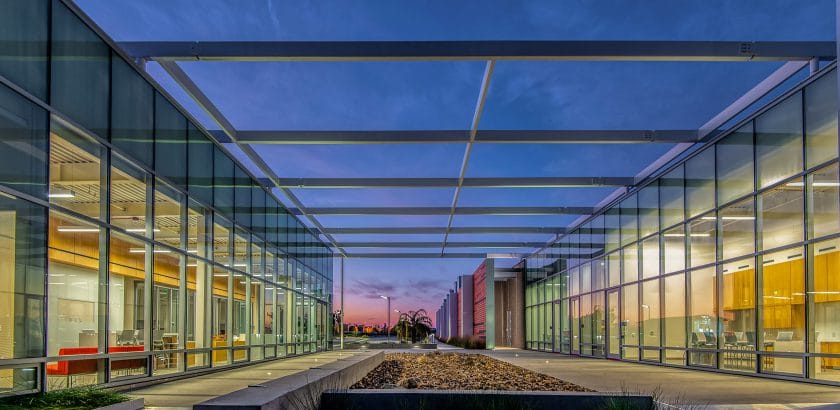Best Green Project: Palomar College Maintenance and Operations Building
Source: ENR


March 7, 2019 | Alisa Zevin
Owner Palomar Community College District
Lead Design Firm BNIM
General Contractor Level 10 Construction
Civil Engineer SWS Engineering Inc.
Structural Engineer BWE
MEP Engineer Syska Hennessy Group
The 30,000-sq-ft Palomar Community College District Maintenance and Operations complex in San Marcos, Calif., was built with sustainability in mind. The two-building design-build project containing offices and facilities was previously spread over eight buildings. One building is dedicated to offices, while the facilities building, which serves the grounds and maintenance division across the entire 252-acre campus, includes warehousing, mechanical, electrical and plumbing facilities, welding, custodial and painting.
The net-zero energy complex uses 344 solar panels that will provide 105% of the buildings’ total energy usage.
Eligible for LEED platinum, the team is seeking to be the first Petal-certified community college in the world. Petal certification, awarded by the Living Building Challenge, is given to buildings that complete at least three of seven environmentally conscious “petals.” The majority of the project uses passive ventilation through solar chimneys, automated windows and fans to cool and heat the facilities. The buildings were designed for 50% water savings, made possible by rain harvesting, native planting and high-efficiency plumbing fixtures. The office space is daylit and has access to natural ventilation, potentially lowering the cooling load by 85%, according to the project team.
The original design plan included a temporary fall protection system for the roof, but they soon realized that it was unnecessary, and instead installed the permanent system earlier in the construction plan, allowing for higher productivity.
One of the judges was “impressed that the team was able to integrate the permanent roof structure during the construction phase, thus providing a safer work environment.”
The team broke ground in March 2017, and work was completed by May 2018.
Link to Original Article (may require registration)
https://bit.ly/2SVlDRL 
